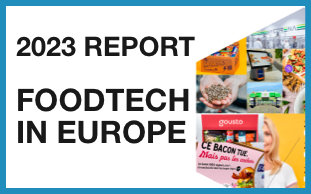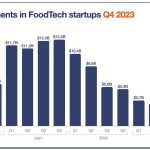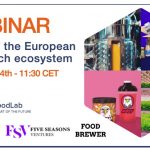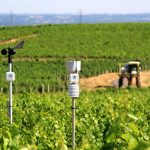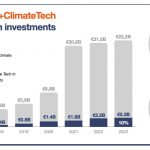After this summer of droughts, water management has become a top-of-mind topic. In the past months, we’ve had again and again this question from clients: “Are there innovative solutions that could help to reduce water consumption along the food supply chain ?”. But beyond solutions, today, I wanted to share four graphs to show why investing more in water management solutions was becoming urgent.
First, why is there a need for water management?
But, as for climate change as a whole, no matter what we do now, we can already predict that the situation will worsen in future years. Just look at the graph below that shows which areas will be concerned by water stress by 2040. It is striking how much land will be concerned by water stress (defined by the difference between what is required and what is available).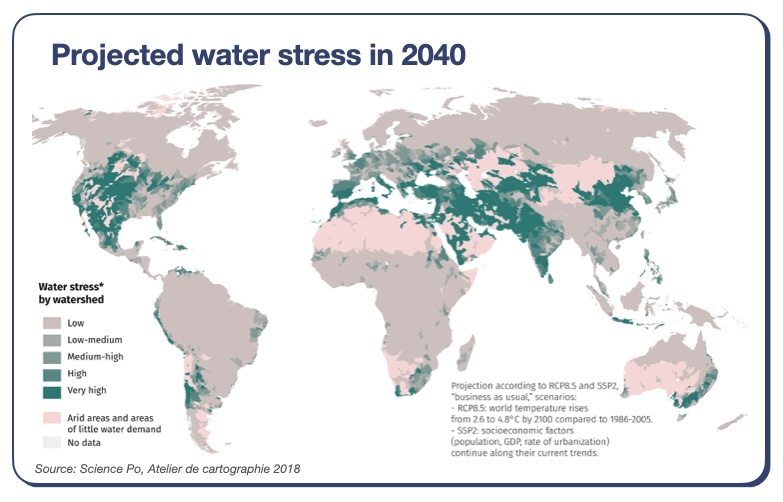
Most of these lands are today’s breadbasket. Solutions will be needed for them to be less reliant on irrigation and for other parts of the world to become more resilient in their food supply.
Then, why is water management a food problem?
Agriculture accounts for more than 70% of freshwater withdrawals. So agriculture is definitely where most actions should take place.
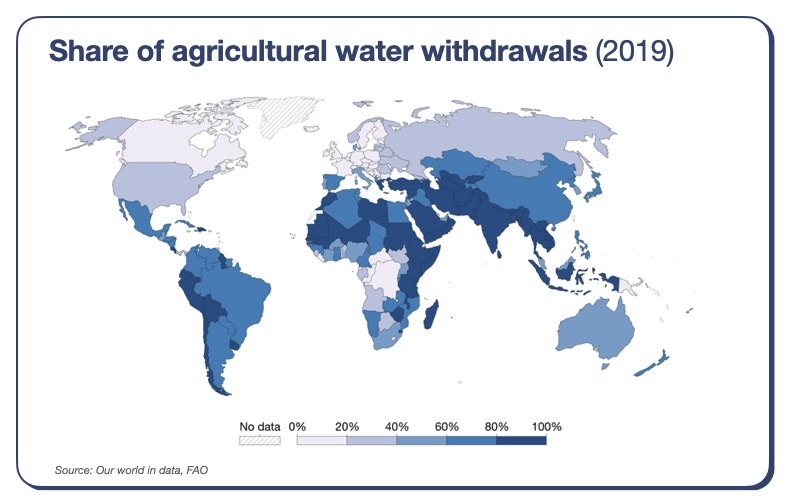
Combining both graphs gives us a clear view of where the situation will be most complicated for food production: South America’s Pacific coast, Southern Europe, a large part of Africa, the Middle East, North Eastern China, India and Australia. That’s quite a lot, notably as these are the areas where we expect the world’s population to grow the most in the next decades.
Finally, why should water consumption be considered a key feature of innovative products?
When discussing climate change, the discussion is often centred around greenhouse gas emissions. However, if CO2 and methane emissions are central, water should not be forgotten.
Below are two graphs that show that focusing on carbon (in CO2 equivalent) can be misleading in some instances. Indeed, producing some foods can be linked to relatively low carbon emissions but consuming vast amounts of water (such as nuts).
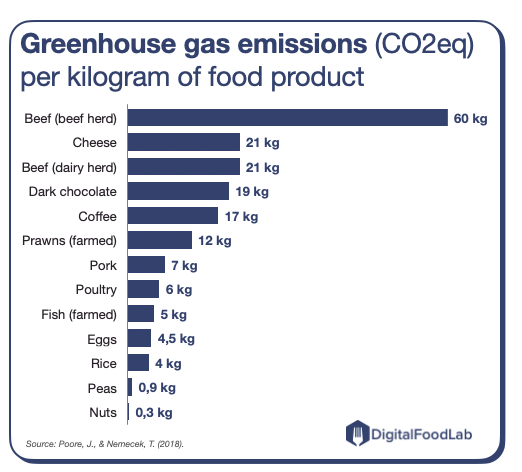
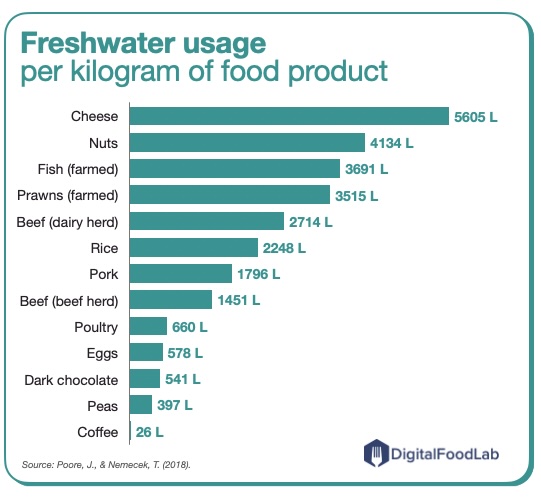
Looking at both graphs, it is obvious that marketing almond milk (or an almond-based cheese) as a “better for the planet” product could be perceived as a very poor choice for a company. In the short term, this could boost sales. But, it will appear shortly as a poor business decision when water will become even scarcer and when consumers will become more educated.
So, are we destined to eat only peas and eggs?
The graphs can lead to multiple conclusions. The first is that peas and eggs are very interesting products that we should focus more on. That’s what many new companies are trying to do with pea-based products by creating innovative products that taste better than those currently on the market.
Then, there is the need to find alternatives to the products at the top of both graphs, notably animal proteins that emit a lot of greenhouse gases and consume a lot of water. Here, we mainly talk about technologies such as precision fermentation (for cheese notably) and cellular agriculture (for meat and seafood products).
Finally, and most importantly for today’s focus, as I don’t envision a world without any traditional livestock agriculture, we need to identify solutions to better use freshwater on farms. In the past couple of years, we have seen a surge in the number of startups, investments and claims by large corporations. However, this innovation ecosystem is still very young and deserves more attention, notably in 3 areas: smart irrigation, new crops, and purification & recycling.
In conclusion, I’d like to point to the fact that only looking at the issue of sustainability through the lens of greenhouse gas emissions can be misleading. I think that step by step, we have collectively to learn to look at things with at least four criteria: greenhouse gas emissions, water usage, biodiversity and animal welfare (this last point is not directly linked to sustainability per se, but it is becoming something that consumers care strongly about and are ready to pay for).

